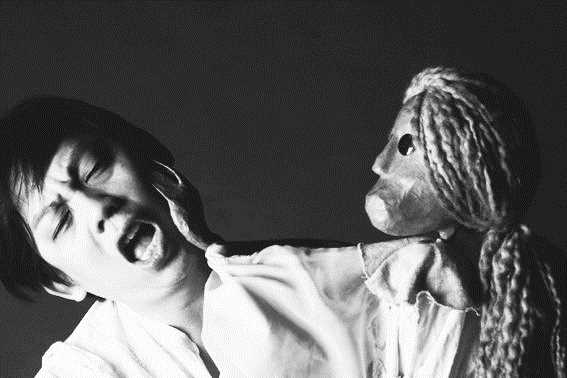Esplanade shares with us about their interview with puppet master and Artistic Director of Paper Monkey Theatre, Benjamin Ho, about his love for puppetry.
This article is an excerpt of the article by Esplanade, read the full article here.
What is puppetry? How do you make a puppet? Are there different types of puppetry?
To find out more about this well-loved art form, we chat with Benjamin Ho, puppet master and artistic director of Paper Monkey Theatre, which won Best Production for the Young at the M1-The Straits Times Life Theatre Awards 2017.

How did you discover your love for puppetry?
It happened when I was very young I guess. I come from a big family with siblings much older than I, and was often left to play on my own. I had to be creative in coming up with playmates as I was not allowed to go out and play.
My favourite television programme back then was The Muppet Show (curiously, not Sesame Street even though it was popular) and I got very curious to know how those puppets moved in such a life-like manner. It wasn’t long before I started looking for answers and came up with my own experiments to find out the “truth”. I also went to the library, read a lot about puppets and hence, started to make my own.
How many kinds of puppetry are there?
Typically, there are four basic kinds, namely hand, rod, string and shadow puppetry. However, there are also some exceptions, which are either combinations of the four—such as the Prague string puppets that combines rod and strings—or distinct forms belonging to specific cultures, such as bunraku from Japan or water puppetry from Vietnam.
Do you make your own puppets? If so, how long does it usually take you to make one and what does the process entail?
Yes, I do. A realistic estimate would be between two to four weeks, depending on how elaborate or complicated the puppet is. I usually start off with the overall look and feel, followed by the kind of mechanism I want to use on the puppet. I will then source for the right materials to make it. More often than not, I deviate from the original blueprint as I believe in adapting during the creation process.
Tell us about your three favourite puppets and why. Which productions were they used in?
This is not an easy question because each puppet is special to me. If I really have to pick, it would be the Sun Wu Kong puppet that I made from recycled materials. It was used in Journey West – Mount of Fiery.
Why this is special? As you know, I am trained in traditional Chinese hand puppetry and getting access to the puppets is becoming challenging and costly due to the diminishing trade of puppet-making. Hence, I turn to common and easily available materials to make puppets that are similar to the traditional standards, without compromising all regular features of the puppet. Sun Wu Kong was the first that I succeeded in making with paper instead of wood.
What are some memorable reactions you have had from young audiences who attend your shows?
A mother once shared with me that she had to drag her son to our show as it was in Mandarin. To her surprise, the son responded well to the show and even asked the mother to buy the storybook in Mandarin for him.
Another unforgettable memory for me was of a father who had brought his daughter with autism to our show. After the show, he came up to me to apologise for his daughter’s outburst during the show. However, I shared with the father that I was observing his daughter’s reaction and noticed that she only cried out whenever the villain appears on stage – it was her way of responding to the show.
At the end of the day, seeing children getting excited as the story progresses still remains the most remarkable reaction for me.
Read more of the interview with Benjamin Ho here.